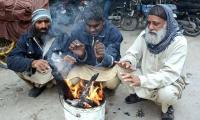spread of authoritarian ideas, greater licence to male-supremacism and violence against women, insecurity among the religious minorities, all amidst neglect of human development.
The Ramzada-Haramzada abuse, ghar wapsi and calls for depriving Muslims of the right to vote are just the crassest forms of the present outbreak of communalism. The government’s indulgence towards them sends a message: it’s India’s open season to malign non-Hindus, ban the sale of beef and even slaughter of bulls, impose the Bhagwad-Gita on schools, and build a cult around Gandhi’s assassin Godse.
The message is amplified when those charged with Gujarat’s ‘fake encounters’ and communal killings, including BJP president Amit Shah, are discharged without trial; but the entire might of the state is brought to bear against secular campaigners like Teesta Setalvad – because they tried to bring the culprits of Gujarat-2002 to justice.
There have been savage cuts in social sector budgets: 20 percent in health, 29 percent in Mid-Day Meal schemes, 17 percent in education, 51 percent in women and child welfare, and so on. Central transfers to the states, which implement many social schemes, were cut by 30 percent.
The Mahatma Gandhi National Rural Employment Guarantee Act had its worst-ever performance under Modi. In 2014-15, the number of person-days of work created was 40 percent less than two years ago. Only three percent of families got the promised 100 days of work, and 70 percent of wages were delayed – to disastrous effect in a year of acute agrarian distress. Employment growth in industry has fallen to barely a fifth of what’s needed to absorb the growing workforce.
The suit-boot-ki-sarkar is shamelessly pro-rich and anti-poor. It’s cajoling capital to invest. But investment isn’t forthcoming. Fifty-two percent of India’s top 500 companies are excessively indebted, 14 percent of bank loans have gone bad.
Modi has failed to diagnose this, and believes that the key to stimulate investment is threefold: dismantle environmental regulations, allow unbridled diversion of agricultural land to industry (hence the land ordinance), and ‘reform’ labour laws to allow hire-and-fire.
The first approach has meant ruthless ‘fast-tracking’ of industrial-project clearances without scrutiny, violating the Forest Rights Act and coastal zone regulations, and redefining ‘forests’.
The high-level (TSR Subrahmanyam) committee has recommended far-reaching changes in environmental laws, including abolition of pollution control boards, self-certification of environment-related information by project promoters, and automatic clearances for roads and power-lines through forests, etc. But environmental regulations are no obstacle to industry: over 94 percent of proposals have been cleared since 2007.
Land has become an extremely contentious issue. The UPA’s land law was meant to give farmers and those dependent indirectly on agriculture a stake in determining their fate – necessary since some 60 million people have been displaced from land since 1947, mostly without rehabilitation.
The NDA’s ordinance undermines this rationale. It is opposed tooth-and-nail by a wide spectrum of parties and farmers’ organisations. A land agitation could turn politically explosive.
The government is sitting on lakhs of acres it acquired for military use and Special Economic Zones, but hasn’t distributed. The ordinance will give private capital free access to land and what lies under it, especially minerals – a huge racket. This has become a Modi obsession.
The planned dismantling of labour protections will rob workers of the right to form unions (for which the minimum membership has been raised from seven to 100). No permission will be needed to lay off workers or close factories with 100 workers; these account for 90 percent of the total number of units. The factories Act will also be undermined, dismantling safety rules. Employment of contract labour for permanent work will become rampant.
Politically, Modi is running the most over-centralised government in India’s history. This cannot work without destroying decision-making integrity and creating insecurity among bureaucrats and ministers; indeed, RSS men have been appointed as ‘officers on special duty’ to spy on them. This makes nonsense of cabinet government.
Modi has introduced venomous confrontation into politics, against the spirit of democracy. Intimidating your opponents, and even your allies, can quickly become counterproductive. Several NDA constituents and Sangh Parivar outfits have turned against the land ordinance. Modi is making enemies out of friends.
Going by recent elections, by-elections, and local bodies polls in different states, the enthusiasm witnessed for Modi last year has all but vanished. The BJP proved incapable of repeating its Lok Sabha performance in vote-shares/seats even in favourable situations like Maharashtra and Uttar Pradesh. The edge it established in parts of West Bengal, including Kolkata, has already eroded.
What’s becoming obvious now is the effect of the thinness of the original support for Modi. He won 31 percent of the vote, but 52 percent of the Lok Sabha’s seats, the highest disproportion ever. His support was highly concentrated in a handful of states – thanks to planned communal violence and polarisation along caste and class lines.
Another factor was his high-octane multi-billion dollar election campaign, which hyped up Gujarat’s at-best-modest social indicators as major achievements. A CSDS-Lokniti poll asked people which state they thought was India’s most developed: 64 percent answered Gujarat, only four percent said Maharashtra, and even fewer cited Kerala, India’s indisputably most socially developed state.
This illusion, partly based on the search for a messiah, is breaking down. People are realising that the ‘56-inch-chest’ man is a hollow caricature of his bloated image. Modi’s troubles are set to worsen.
The writer, a former newspaper editor, is a researcher and rights activist based in Delhi.
Email: prafulbidwai1@yahoo.co.in
There are over 11 million Pakistanis settled abroad, out of which around six million work in Gulf and Middle East
This year alone, US Treasury would have to roll-over $10 to $14 trillion in maturing short-term debt
Tear gas no longer marks just protest sites; it paints entire cities as battlegrounds but then again, PTI did it first
Political structures and governance systems have been central to economic and social development
It is confirmed now 40 Pakistanis had died after boat of migrants had capsized in sea near Greece
Many people believe that in future, AI will play an even more significant role in their lives







